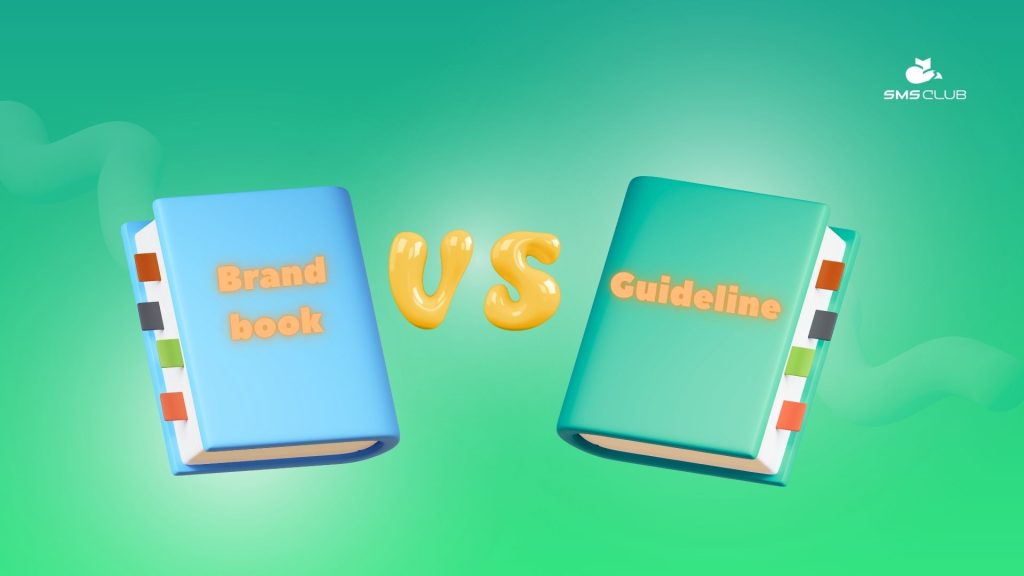What is the difference between a brand book and a guideline

Contents:
Contents:
Starting your own brand is not easy, but maintaining the set standard for decades is definitely a challenge with an asterisk. To make life at least a little easier, it’s worth thinking about a brand book early on—the self-portrait of your business. In what situations might it be useful, when is it absolutely necessary, who should be responsible for it, and how often should it be updated?
Brand book: for whom, why, and how?
According to the U.S. Bureau of Labor Statistics (BLS), about 20% of new businesses fail within two years of launching. But 25% endure all the blows of fate and the economy and go on to work, grow, and thrive for more than 15 years.
In Ukraine, similar patterns exist. At the same time, there’s a clear trend: projects that not only balance skillfully between “price-quality-demand”, but also:
- sell not just the product, but meaning,
- stand out from the competition
It’s debatable, but almost every modest yet recognizable business felt the need early on to answer a bunch of questions like “who am I?”—and document those answers in a dedicated file.
So, what is a brand book? It’s one of the key documents of any company. It can be compared to a technical passport of a building. But the focus here is not only on the width and length of every wall or the design of load-bearing structures—but also on everything related to the soul of that building—from the story of how the future owners met to the reason why there must be an image of a motanka doll in every room.
In business terms, it’s a set of rules, instructions, and clear answers that:
- Regulate a unified corporate or brand style. Thanks to this, the brand book becomes a strategic tool that initially supports business growth, then builds brand recognition, and ultimately leads to lasting emotional associations with the product.
- Help avoid chaos: in logo usage, its placement in visuals, font and size, tagline or CTA versions, etc. Even the exact shade matters: no one will even think of coloring the logo lemon-yellow if it’s usually golden-yellow.
- Allow you to protect your interests in disputes. For example, in 2001, two organizations clashed over letters—the World Wildlife Fund and the World Wrestling Federation. The case over the “WWF” acronym was resolved in favor of the fund. There are similar examples in Ukraine too. In 2024, a well-known jewelry manufacturer won a case against the illegal use of its trademark on a store sign.
Seven answers—what does a brand book consist of?
The first attempts at product branding date back to ancient times—the history of the concept is described in detail by Fridrik Larsen, a global branding expert. In short: ancient Greeks, Viking merchants, and even the first sewing needle makers in China tried to protect their trademarks through special packaging and markings.
Today, many people work on building recognition for a business or producer—regardless of whether it’s a small business, large company, or personal brand. Typically, at least a marketer and creatives (designer and copywriter) are involved. Sometimes it’s helpful to consult a lawyer.
Branding is definitely not limited to a name and logo—though they are essential. A basic list of brand book questions includes:
- Mission and values: why do you exist? What good do you bring—what problem does your product solve? Often, the answer is simple: you’re not selling English courses, but confidence. Or your product isn’t sneakers—it’s freedom.
- Archetype definition: what are you like inside? A caring parent who looks after everyone? Or the Jester—the life of the party, always young at heart.
- Guideline: what do you look like? What are your favorite colors, which visual accents attract attention and help consumers remember you?
- Brand story: where are you from? It could be a real origin story or a fictional one—the purple cow in an Alpine meadow illustrates this perfectly.
- Behavior: how do you interact with others? What’s acceptable to you, and what isn’t?
- Audience: who are your people? Do they wait for a brighter future or build it themselves? Do they prefer books or comics? Do they drink uzvar, kvass, or fizzy mineral water during the day?
- Communication: what is your voice? Some companies define verbal nuances in general terms, while others focus on encoding meanings. For example, always writing “we did” instead of “I did,” or vice versa.
What’s included in the brand guideline?
Visuals are an inseparable part of communication. Companies often start their brand book with this section and continue to focus heavily on the visual aspects. Because of that, the two terms have blended and are sometimes treated as synonyms—but that’s incorrect. So, what’s the main difference?
Brand book—a strategic document containing comprehensive brand information. This content is stable and rarely changed. Core values, archetype, and brand legend can be updated—but only during a rebranding.
Guideline—a tactical tool that is part of the brand book. It ensures brand perception consistency. This info is also fixed, but needs regular tweaking—your visual identity should look equally good in the subway and on a partner brand’s website. This includes:
- Logos (yes, there can be multiple versions),
- Fonts (for headlines, captions, body text),
- Color palette (for logos, social media, etc.),
- Graphic elements.
Instead of conclusions
One might assume that a brand book is created once and for all, while the brand book guideline should be updated almost every six months.
That’s not quite true. Brand book components should be updated after significant changes in the country’s life in general and the company’s in particular. How often such changes occur is a question with no clear answer, especially in Ukraine. “Significant changes” could include the launch of a new product, entering a new market, etc.
A guideline should respond to updates minimally—it’s a more stable element. Adding a snowflake to the logo before New Year is one thing, but abandoning the established golden-yellow color is quite another.
Still, small changes to a brand’s identity are worth making at least every few years: the line between “recognizability” as a mark of quality and “stagnation” as resistance to growth is very thin.




